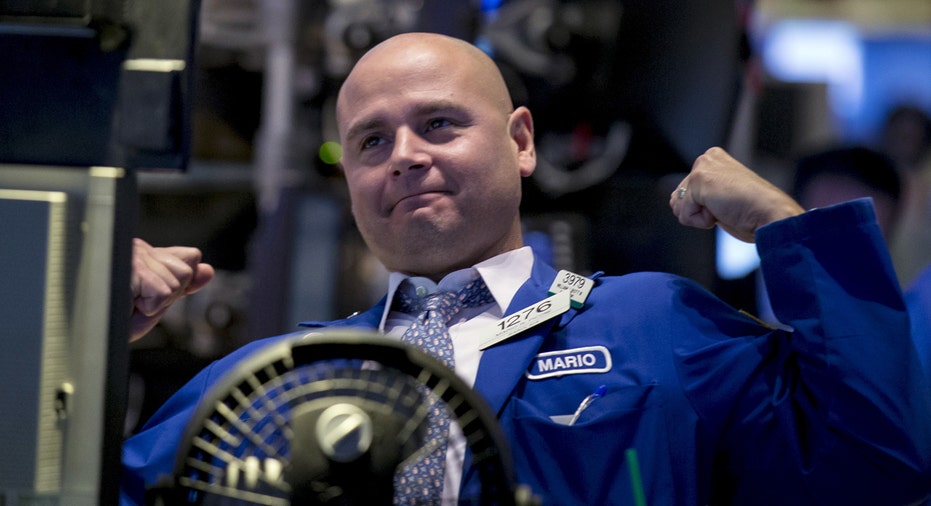Record Day on Wall Street: Broader Averages Notch Fresh Closing Highs

Just two-and-a-half weeks after the Brexit vote heard ‘round the world, U.S. equity markets again proved their resilience as the as the broader averages rallied above their all-time closing highs through the session, ending the trading day at fresh record levels.
The Dow Jones Industrial Average jumped 120 ponts, or 0.66% to 18346. The S&P 500 added 14 points, or 0.70% to 2152, while the Nasdaq Composite gained 34 points, or 0.69% to 5022, erasing its losses for 2016.
Meanwhile, the VIX index, Wall Street's so-called fear gauge, dropped to a five-week low.
The catalyst for the strong upward momentum was a trifecta of anticipation, Terry Sandven, chief equity strategist at U.S. Bank Wealth Management, said.
“Stocks appear to be trending higher in the absence of bad news, anticipation of better-than-expected second quarter earnings, and an environment of few attractive alternatives,†he said.
Last Friday’s unexpectedly strong employment report, after a surprisingly weak May print, helped wipe away investor doubt about the health and strength of the U.S. economy, and brought focus back to market fundamentals and 2016’s second batch of quarterly earnings reports. The 2Q reporting season kicked off Monday night with results from Alcoa (NYSE:AA), which beat the Street, but showed a decline in profit thanks to lower aluminum prices. Investors braced for the latest results from America’s biggest banks, set to report at the end of the week beginning with JPMorgan Chase (NYSE:JPM) ahead of Thursday’s opening bell.
"Equities are priced to perfection and we need to see earnings that can support it."
One hundred S&P 500 companies are set to release their latest results next week, and more than 200 the following week. Sandven said those figures and the market reaction that follows will be the real test for whether the recent sharp moves higher in equities are justified.
“I think you need an improving economy to drive earnings, and higher earnings to support higher stock prices. That’s a work in process. Equities are priced to perfection and we need to see earnings that can support it,†he said.
The decision for Britain to leave the European Union presents a possible overhang to global growth, and could force U.S. multinational earnings into one of two directions by the end of the year: If the global economy slows, the value of the U.S. dollar will increase and put pressure on U.S. corporates. However, if the process for the U.K. to unwind itself from the EU drags on, Sandven expects a boost to U.S. corporates as the value of the dollar could weaken over a longer time horizon.
“Brexit puts more attention toward, not 2Q, but guidance going forward,†he explained. “That’ll be a key driver for performance in the back half of 2016. The market performance of the last couple of days implies that markets see better-than-expected second-quarter results and guidance.â€
Data from S&P Global Market Intelligence on Tuesday showed aggregate second-quarter S&P 500 earnings were estimated at $28.15, a 5.5% decline from the year prior. It would be the fourth quarterly decline in a row.
From here, with investor focus back on U.S. stocks and the domestic economy, it appears Brexit-induced selling at the end of June was just a blip on the radar. But Charles Schwab’s chief investment officer, Brett Wander, cautioned yield-hungry investors from adjusting their risk profiles so soon.
“U.S. Treasuries, as low in yield as they are, they’re still probably one of the highest yielding foreign exchange sectors globally. If you want yield, the U.S. is probably the place to be. Just because yields seem low, they can go lower,†he warned.
As investors moved into riskier positions like equities on Tuesday, the yield on the 10-year U.S. Treasury note, which moves inversely to its price, rose 0.086 percentage point on Monday to 1.52%.
Sandven said rather than recommending investors pile into U.S. government debt, he likes the 66% of S&P 500 companies offering dividends above the yield the 10-year Treasury note provides. In addition, he suggested looking toward sectors that have year-to-date underperformed relative to their peers. Those include health care, consumer discretionary and technology, with focus turning away from defensive names including telecom, utilities and consumer staples.



















